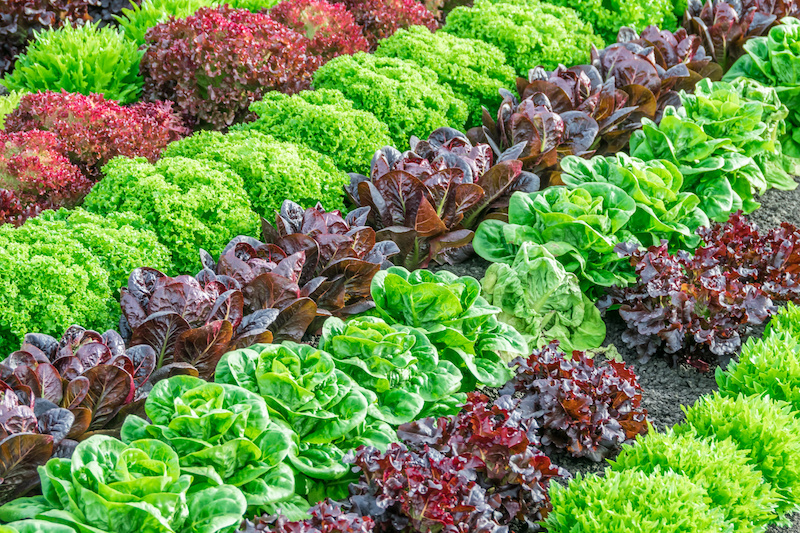
Not only are lettuces delicious in salads but their diverse shapes and colours make them an interesting addition to the garden. Increasingly, there is also a trend to grow lettuces in troughs or even hanging baskets.
To get the best results, lettuces will prefer a fertile soil, ideally one that was improved with well-rotted organic matter last autumn. But if like many of us you are playing catch up just choose a good multi purpose compost or cut open a vegetable gro-bag and use the contents. We also recommend adding some growmore to the soil about a week before you sow your seeds. Make sure the growmore is evenly distributed and mixed in.
Sow your lettuce seeds in succession to ensure you have a continuous crop. Perhaps sow them every two weeks between now and July. If you are only sowing a trough or basket one packet of seeds will give you plenty to do this with otherwise if planting a larger area you may want to choose several varieties and sow 1cm (half an inch) apart in 5cm (2 inch) wide drills.
Because of their interesting colour and shape. Lettuce plants could be added to any gap in the garden. To do this we recommend sowing your seeds in “cell trays” these are plastic trays with individual planting cells. They enable you to grow your seedlings to a reasonable size before planting out. Alternatively you can buy lettuce plants that we have grown in our greenhouses and miss the sowing stage altogether.
There are many varieties available to grow so you may want to scan the seed section at our garden centres and study the description on the packets. However, here is a condensed list of our favourites:
Cos: Cos (or Romaine) are traditional Mediterranean lettuces. They range from mini ‘Little Gem’ to mid sized “Chartwell” and large “Lobjoit’s Green Cos” or “Paris Island”
Leaf Lettuce: Usually purchased in mixed packets these lettuces range from frilly ones to oak leaf shaped ones to low rosettes. “Lollo Rossa” is a well known cultivar.
Butterhead: These reliably hardy, round shaped and soft-leafed varieties. Their hardiness make them a good choice for early crops but they can be very light on flavour. Look out for “Tom Thumb”
Crisphead: Icebergs are the leader of the pack in this category. Crisp dense heads that refrigerate well. These varieties can bolt in drought and tend to require a longer growing season.
Bolting is quite simply “going to seed”, the plant’s aim in life is to reproduce and quite simply something has triggered the plant to feel it necessary to flower and create seeds earlier than a perfect life cycle. In the case of lettuce, a lettuce will bolt (put all energy into flowering and creating seeds) after a sustained period of warm weather that has followed a previously cold period. If a lettuce bolts it will create bitter tasting leaves.
Lettuce tends to bolt very quickly, putting out long seed stalks. Once it starts, you literally have only a couple of days to deal with it before the lettuce crop is ruined. Once the seed shoots appear, you can trim them back, but be prepared to do this daily in order to keep them back.
To prevent bolting, planting leafy lettuces in the spring and continually harvesting (cutting them back) during the year should work. Starting your lettuce indoors well before the frost lifts is another option. The shock of the transplant process means that the lettuce will be well through its lifecycle by the time the heat of summer really sets in.
After about three weeks from sowing you will need to thin your plants to 5cm (2 inches) apart. Use the baby leaves you remove in salads. Then from 5-6 weeks after sowing you will be able to remove further young leaves and progressively thin out your plants. If left to mature into a dense head, most lettuces will be ready to harvest as a whole just 10 weeks after sowing.
For all your lettuce seeds or plants, cell trays, compost and growmore, simply visit one of our Exeter based garden centres.